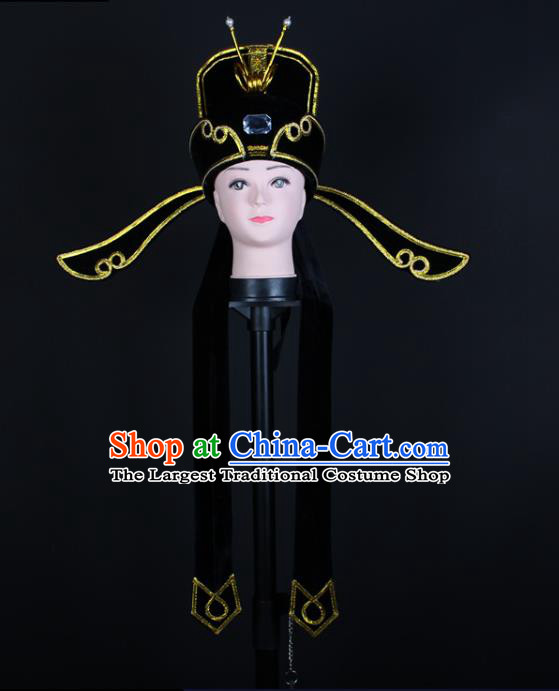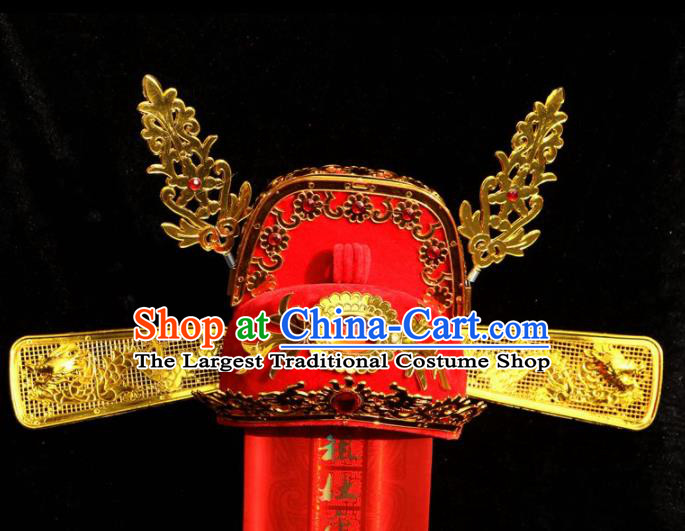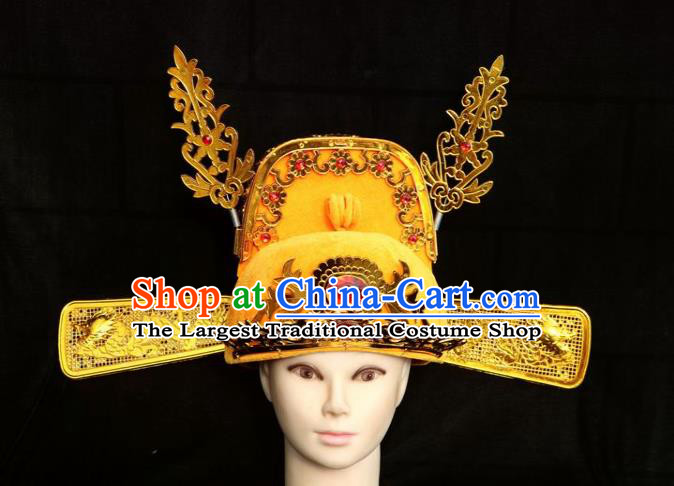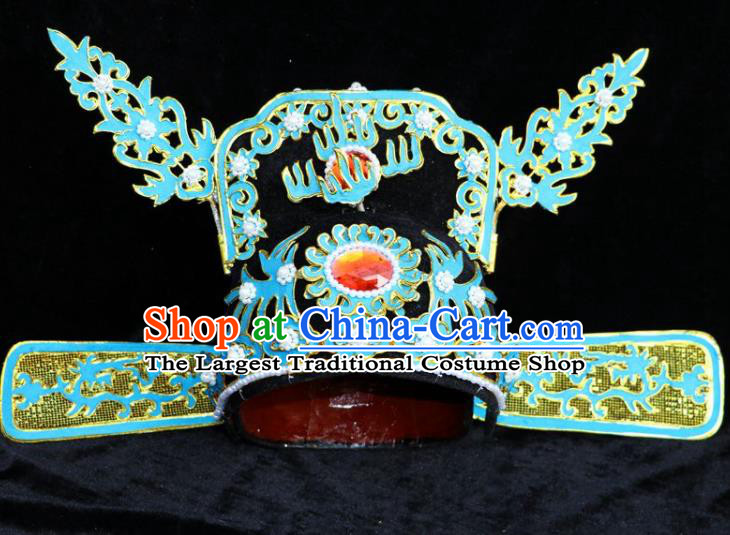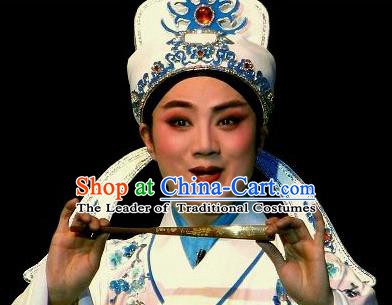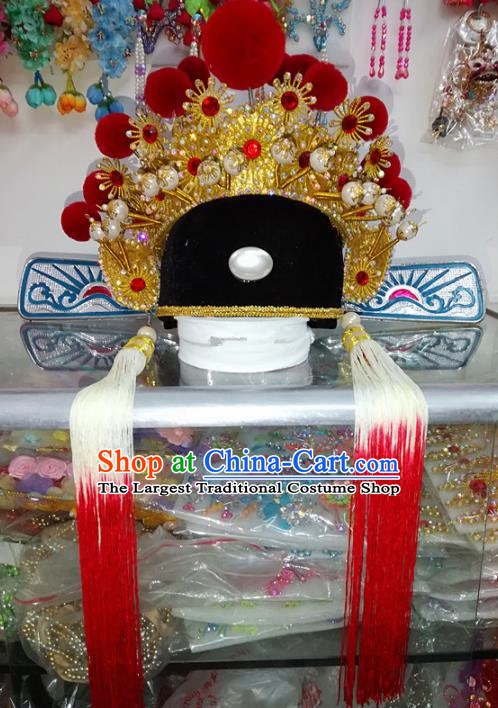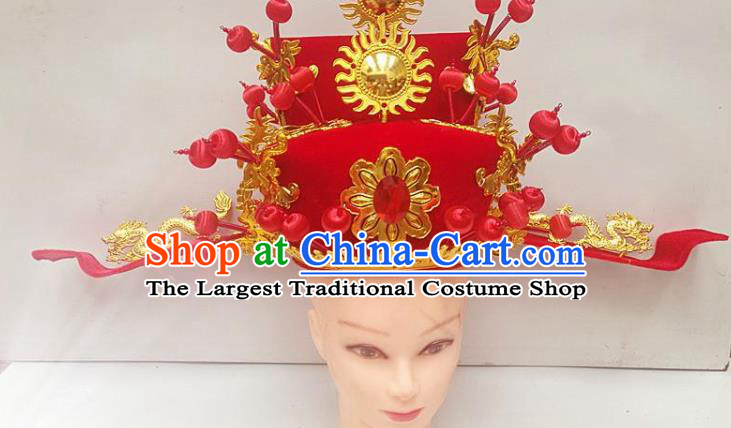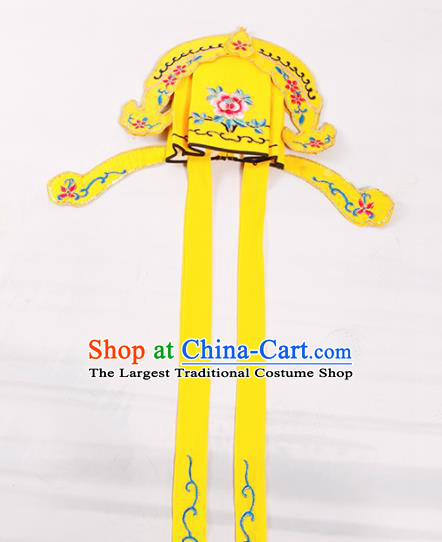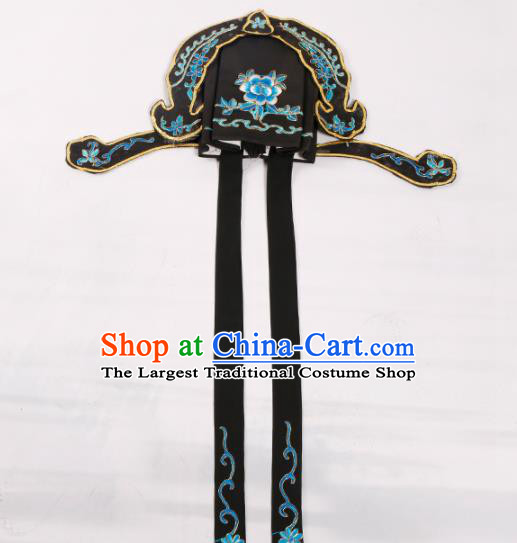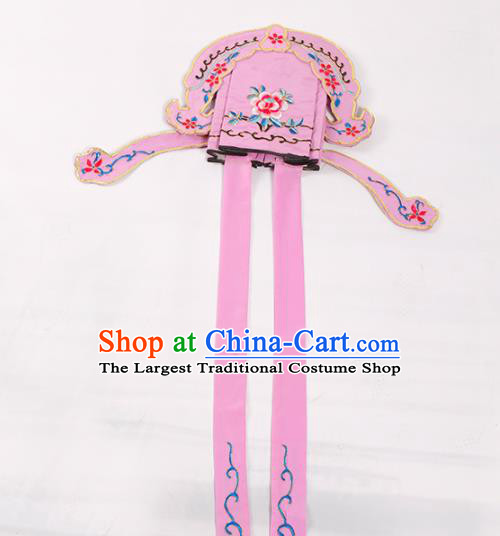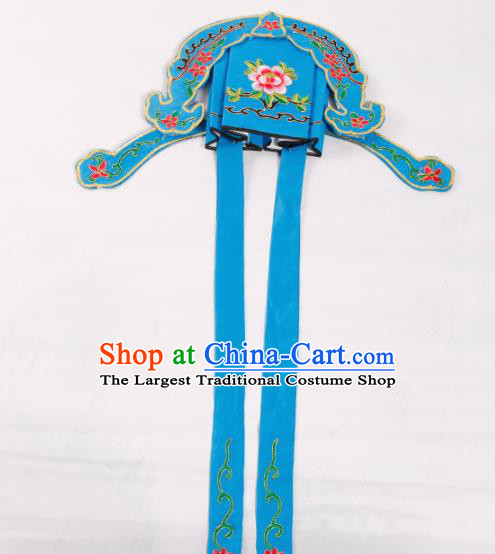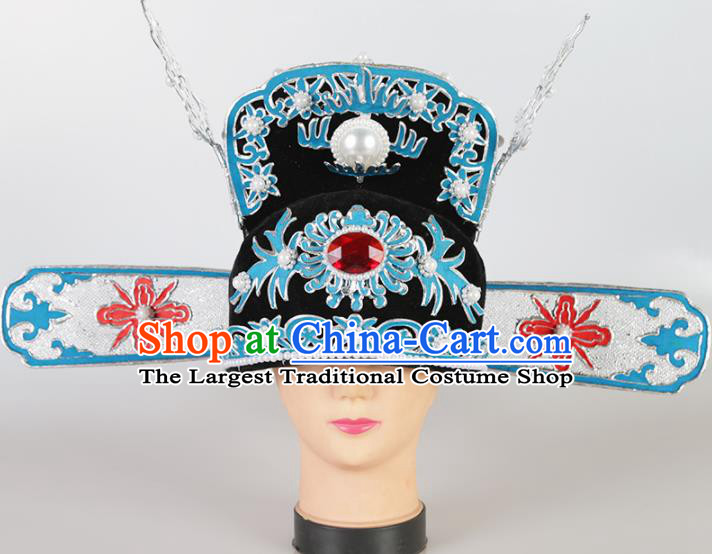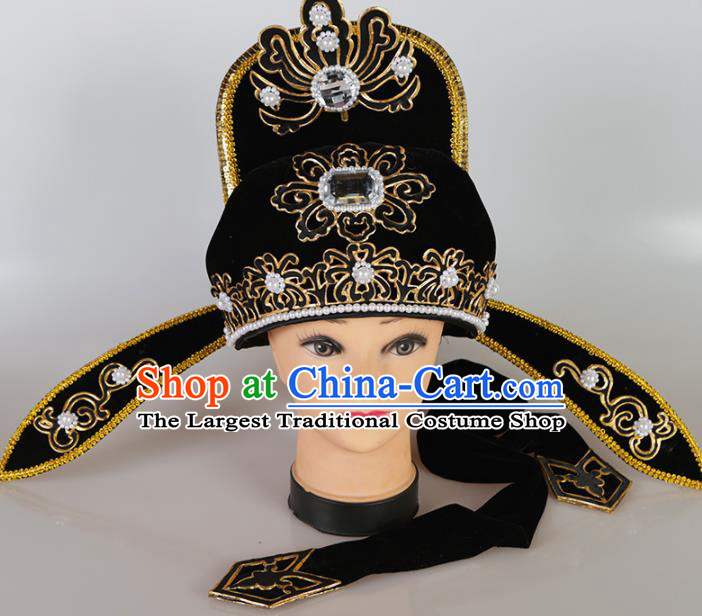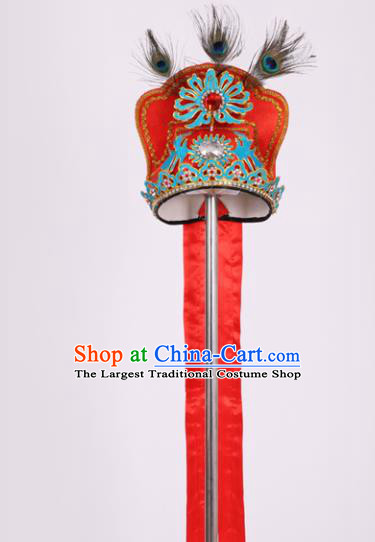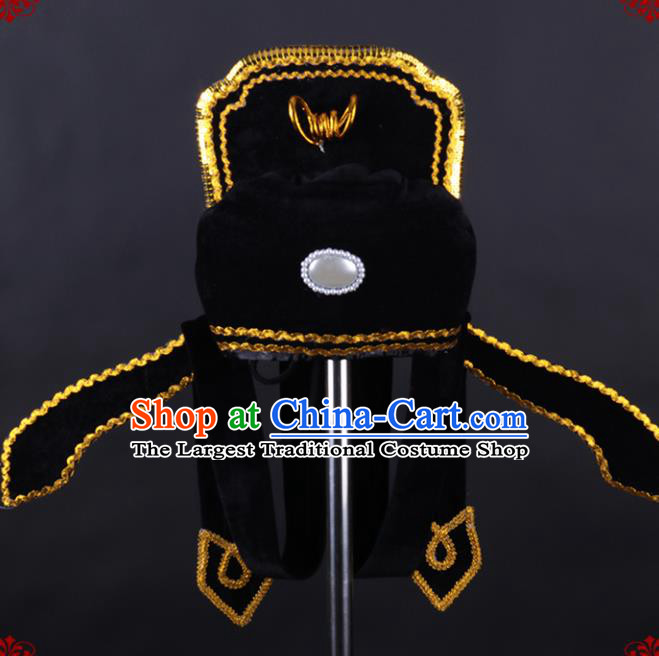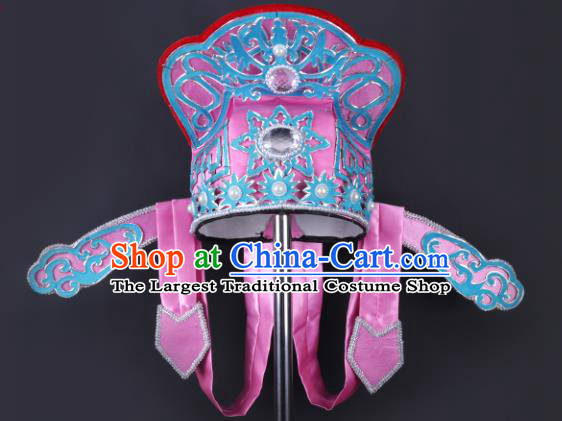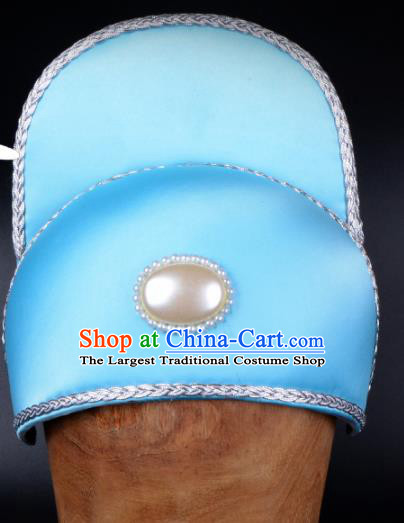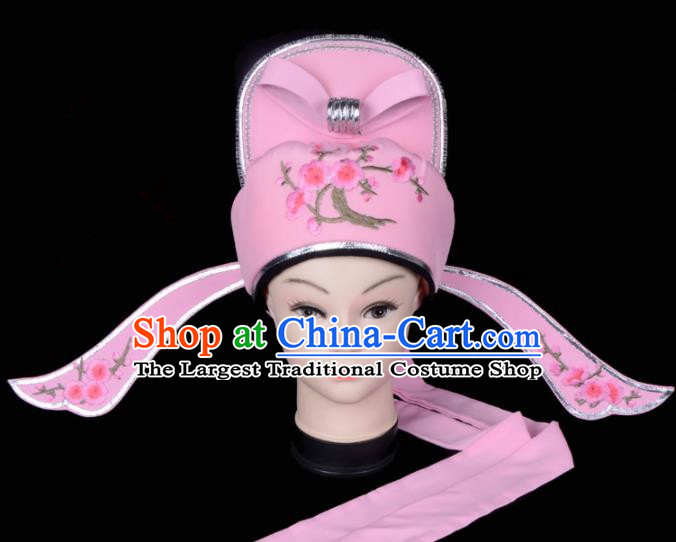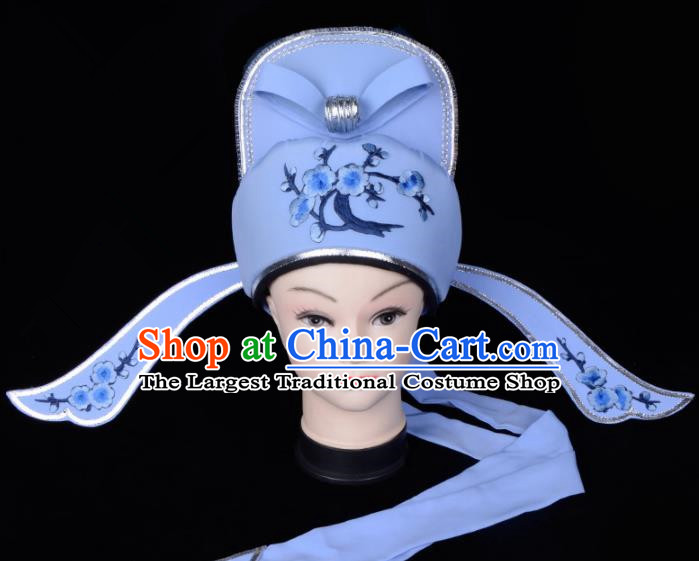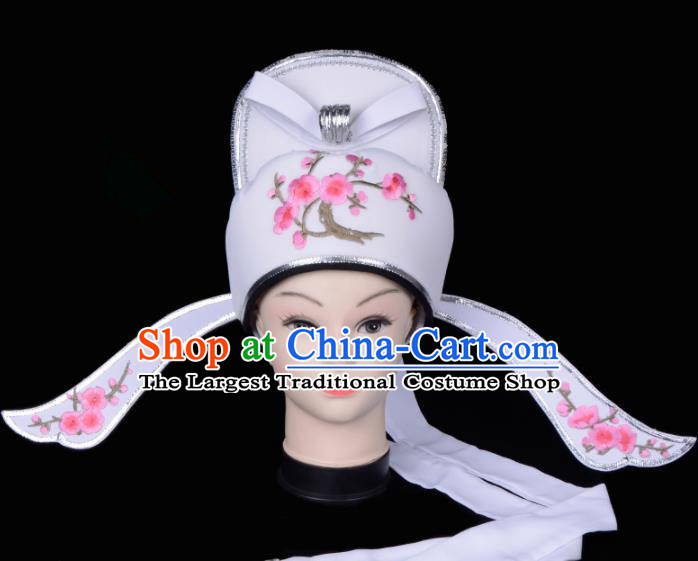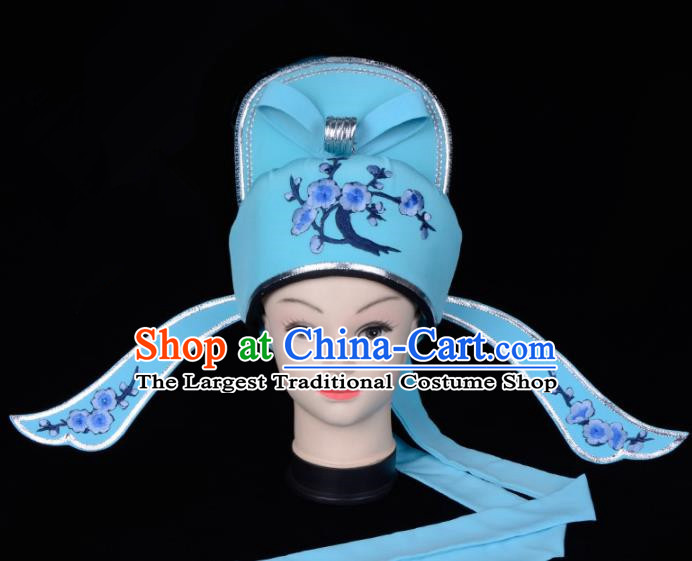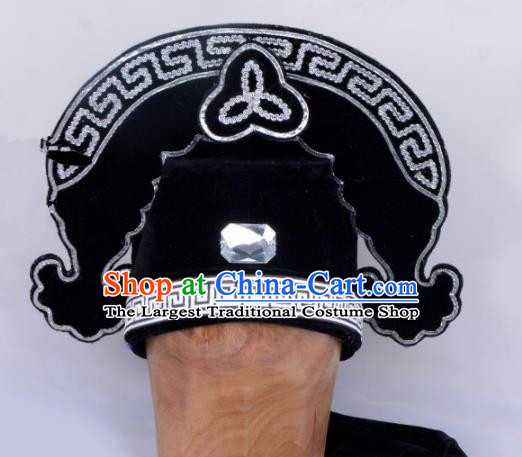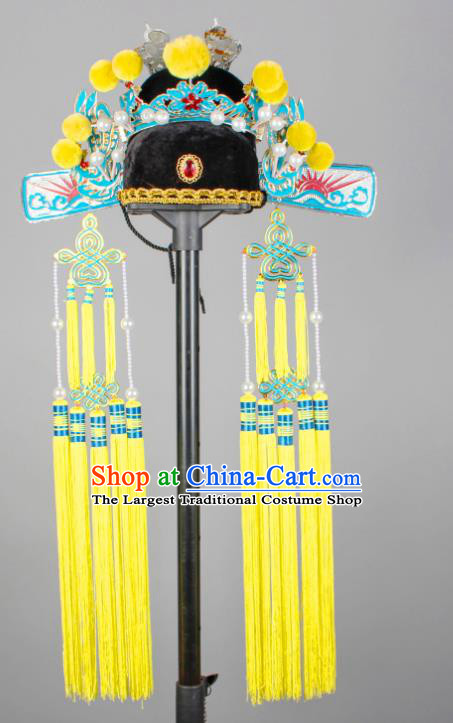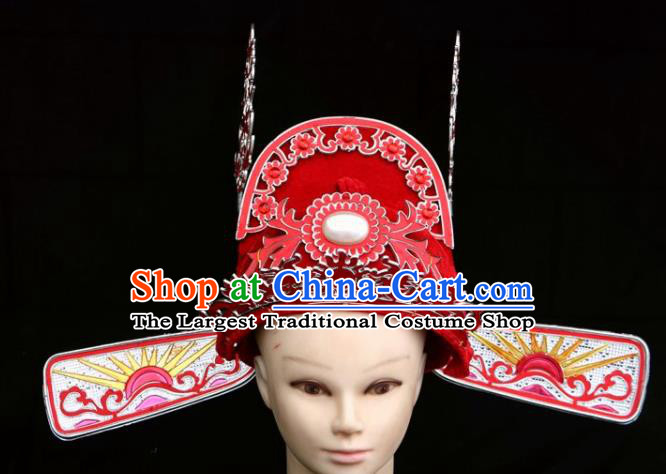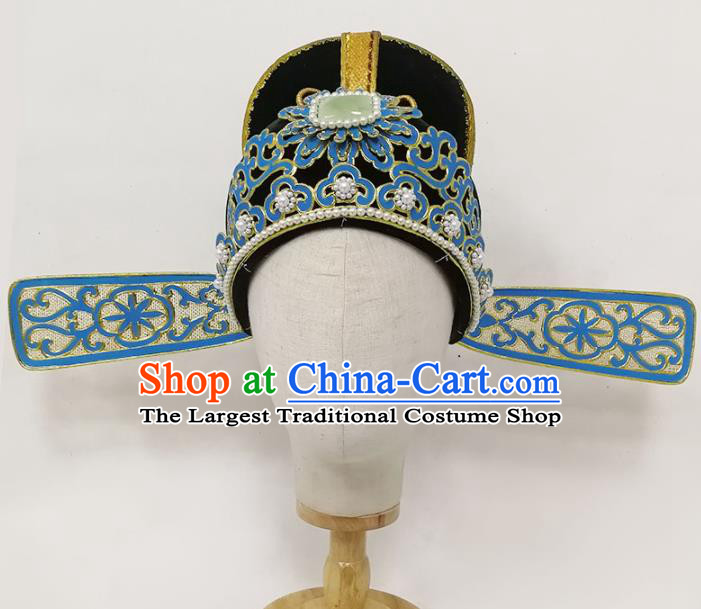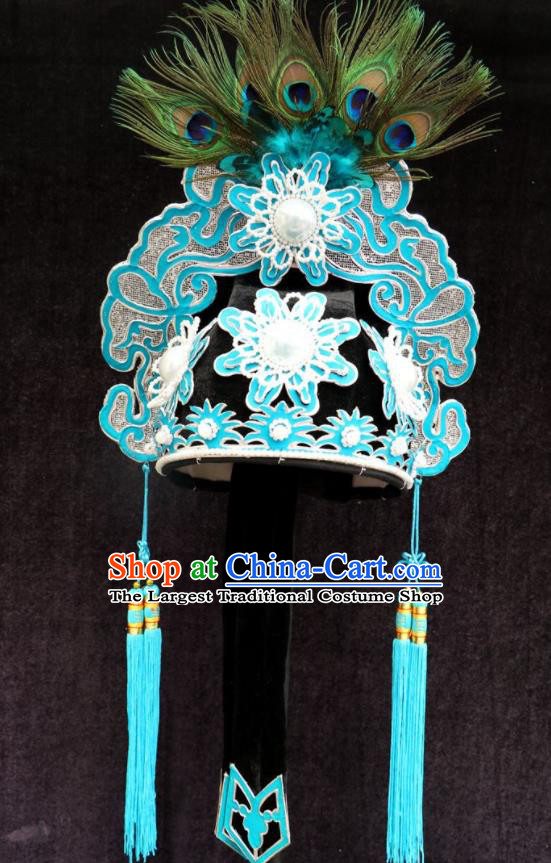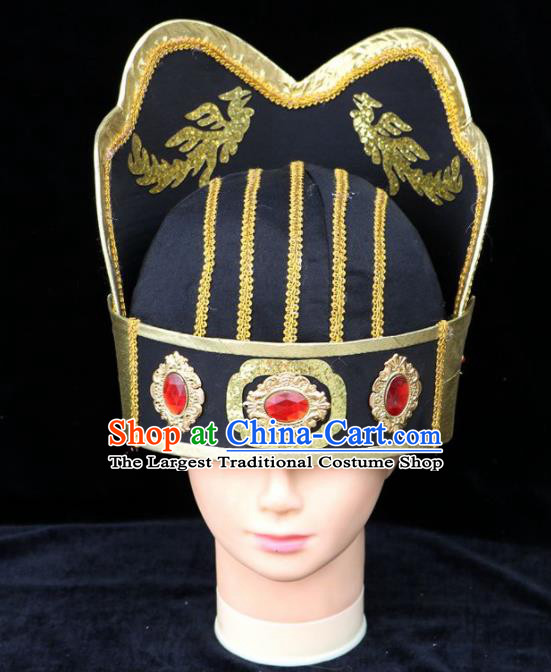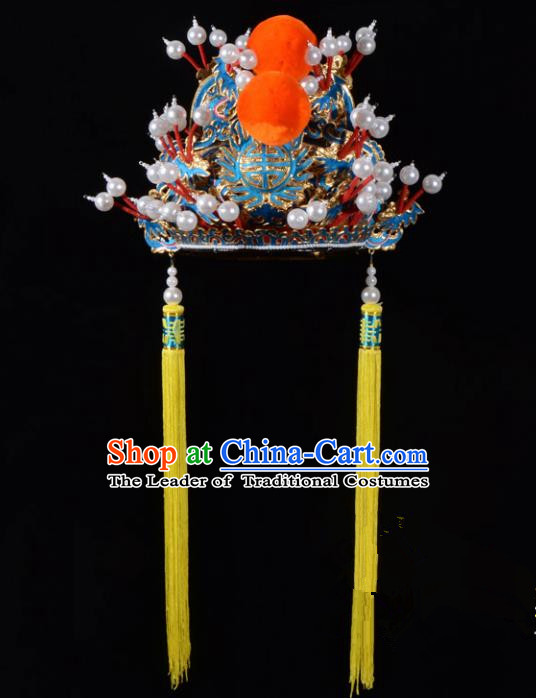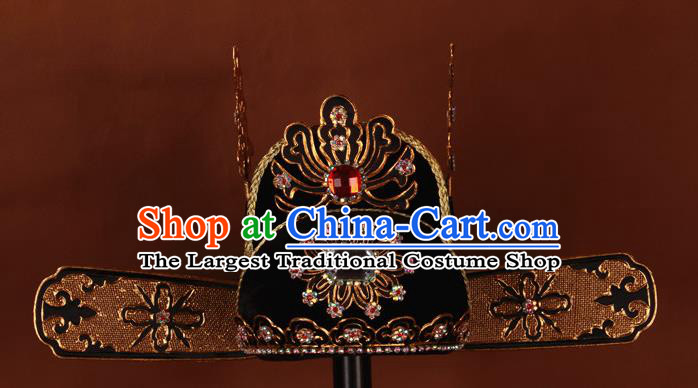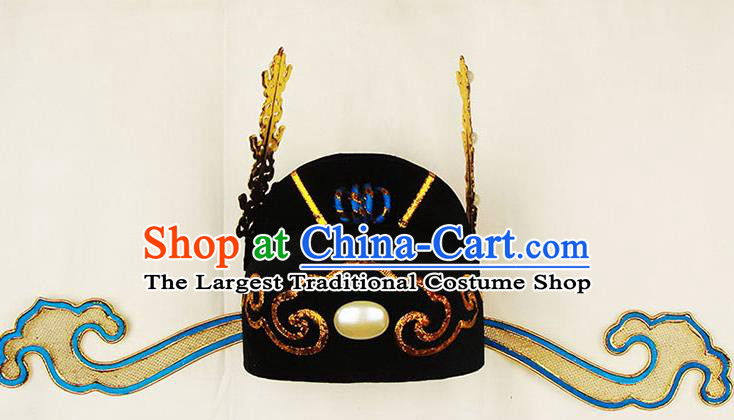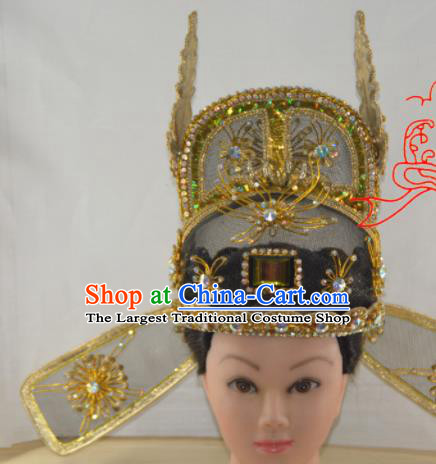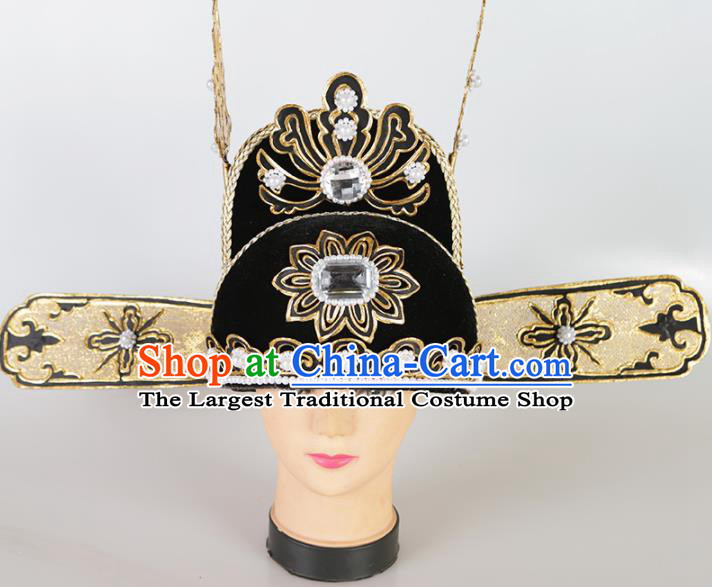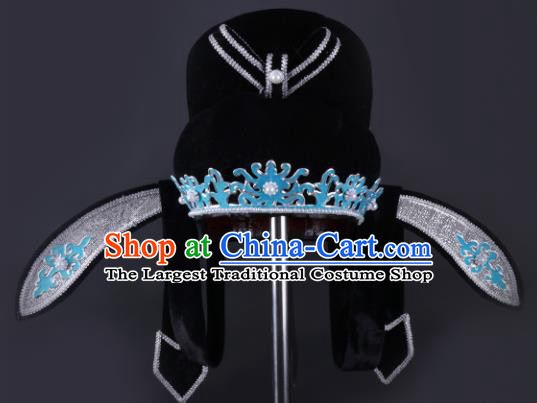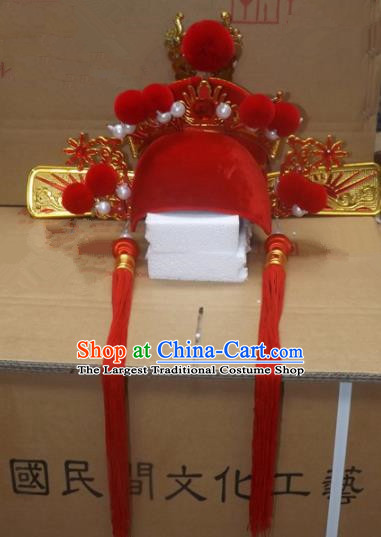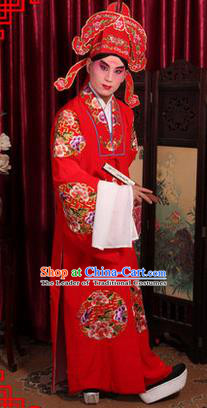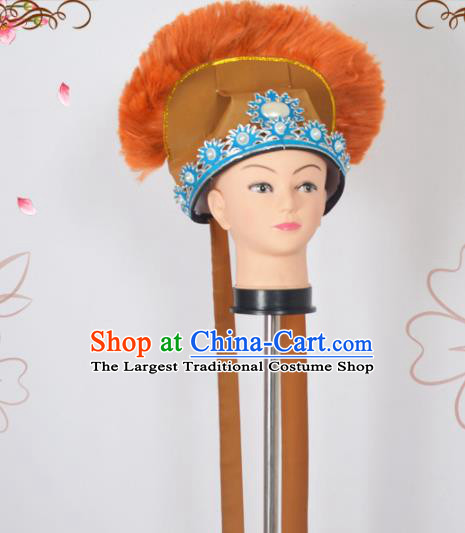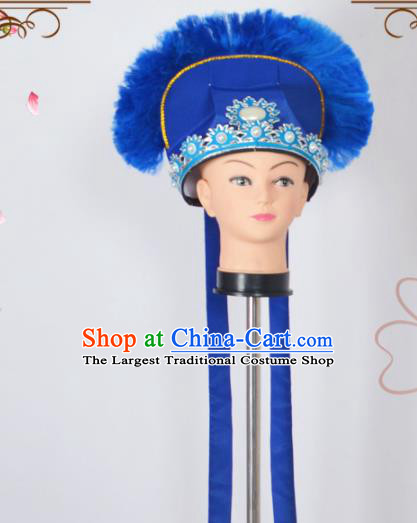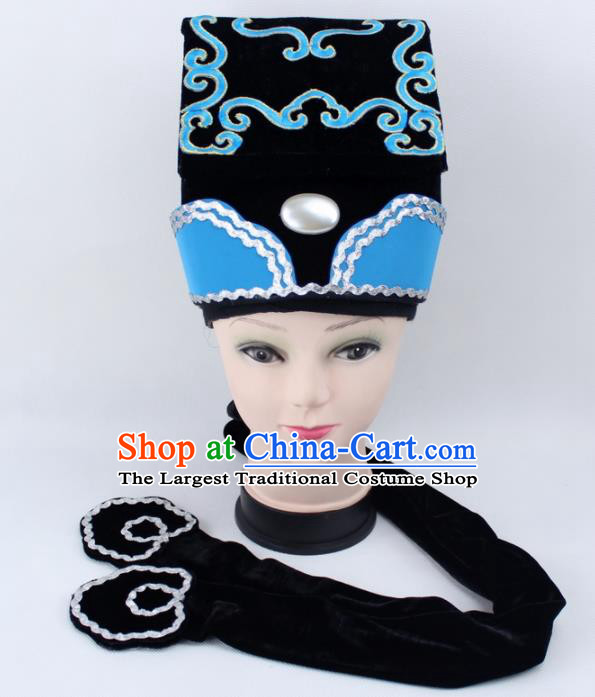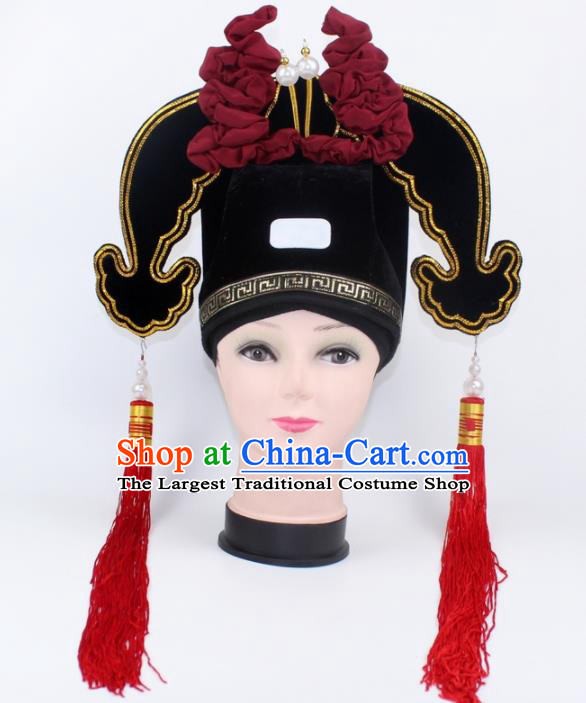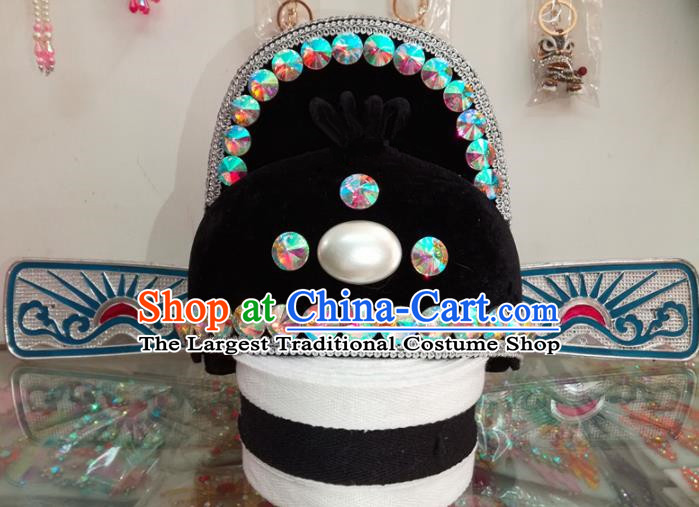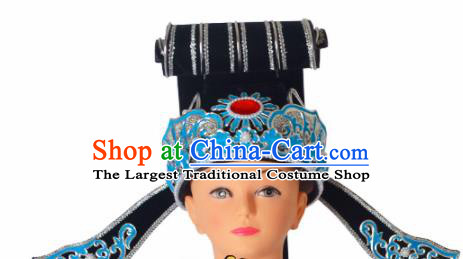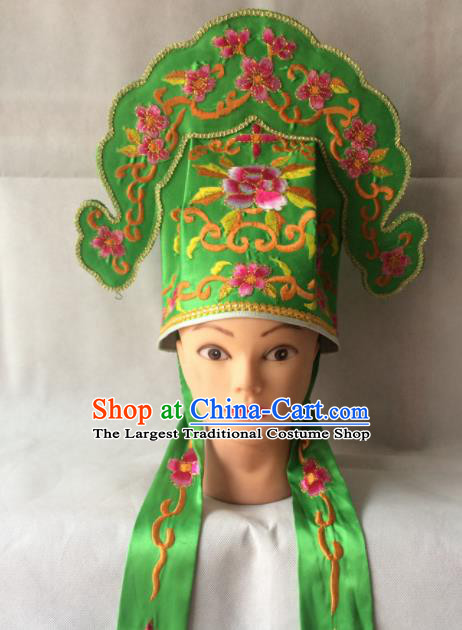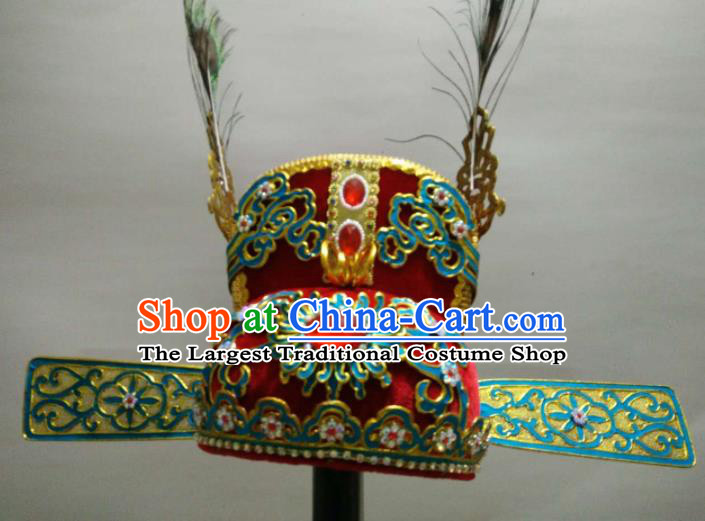
Click Related Pictures for More Audios:
The traditional Chinese Jingju (Beijing Opera) scholar bride headdress, also known as the "Wenwu Zhuangyuan Hat," is an indispensable prop in Jingju performances.
This headdress is renowned for its unique design and exquisite craftsmanship, representing the essence of traditional Chinese culture.
The design of the scholar bride headdress was inspired by the ancient Chinese imperial examination system, symbolizing the status and honor of scholars.
It is typically made of red silk fabric and adorned with golden embroidery of auspicious symbols such as dragons, phoenixes, peonies, and more.
These patterns represent prosperity, good fortune, and happiness.
Additionally, the scholar bride headdress features a pair of pearl earrings, adding to its elegance.
In Jingju performances, the scholar bride headdress holds special significance.
It not only represents the character's identity and status but also symbolizes their pursuit of knowledge and yearning for a better life.
As such, the scholar bride headdress has become a striking feature on the Jingju stage, captivating audiences with its beauty and cultural significance.
Over time, the scholar bride headdress has evolved into a cultural symbol, representing the inheritance and development of traditional Chinese culture.
Today, many Jingju enthusiasts and collectors are passionate about collecting and studying these exquisite headdresses to gain a deeper understanding and appreciation of this valuable artistic heritage.



